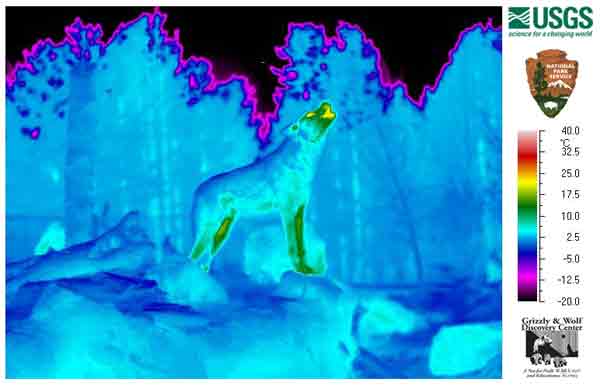
Images Take Wolves' Temperature

A wolf howls in this thermal image taken at the Grizzly and Wolf Discovery Center in West Yellowstone National Park.
Researchers from the USGS are using thermal images like this to determine how a disease called sarcoptic mange affects the survival, reproduction and social behavior of grey wolves in Yellowstone National Park .
The sarcoptic mange results in hair loss and depressed vigor which leaves the wolves vulnerable to hypothermia, malnutrition and dehydration, and which can eventually lead to death.
"Thermal imagery of wolves allows us to not only document the extent of hair loss caused by mange, but also to determine the actual loss of heat, and energy, associated with the different stages of infection," said Paul Cross, a U.S. Geological Survey disease ecologist. "A great side benefit is that this is a noninvasive way to study the disease and its effects. We don't have to capture wild wolves to do this."
Scientists will begin using the thermal imagery on wild wolves in February. Remotely triggered thermal-imagery cameras will be set at locations that wolves frequent and the resulting images will be uploaded to computers weekly for Cross and his colleagues to examine.
- Video: Tour Yellowstone National Park
- Yellowstone and Yosemite: Two of the World's Oldest National Parks
- Top Ten Most Visited National Parks
Sign up for the Live Science daily newsletter now
Get the world’s most fascinating discoveries delivered straight to your inbox.











